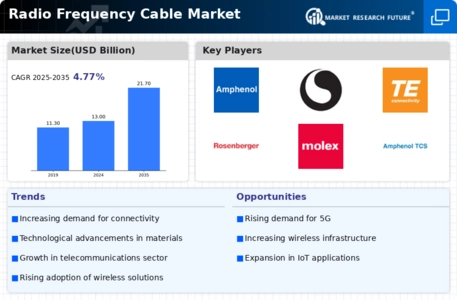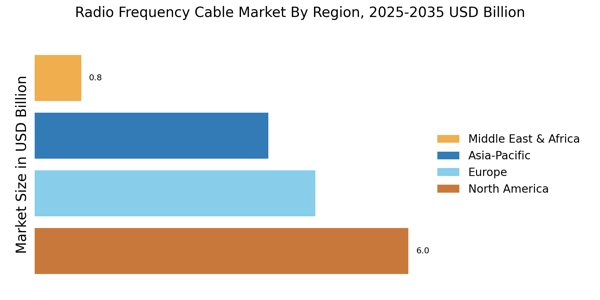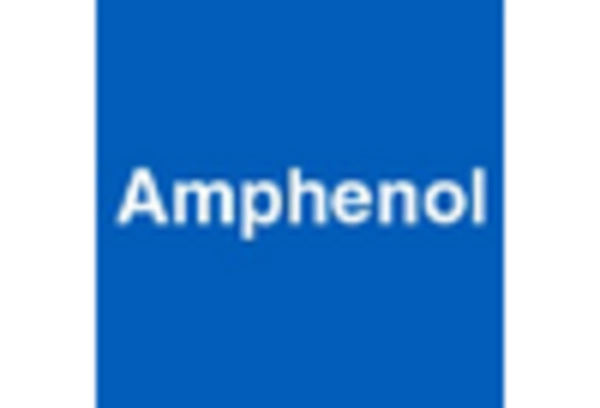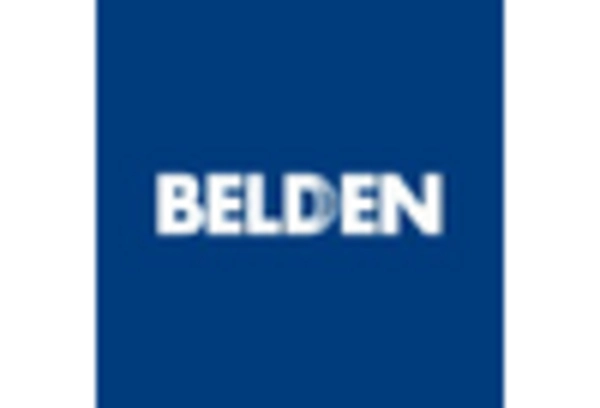Growth in Automotive Electronics
The Radio Frequency Cable Market is benefiting from the growth in automotive electronics, particularly with the rise of connected vehicles. As automotive manufacturers integrate advanced communication systems, including vehicle-to-everything (V2X) technologies, the demand for reliable RF cables is escalating. These cables are essential for ensuring effective communication between vehicles and infrastructure, enhancing safety and efficiency. Market analysis indicates that the automotive electronics sector is projected to grow at a rate of approximately 10% per year, which will likely drive the demand for RF cables. This growth presents a significant opportunity for manufacturers within the Radio Frequency Cable Market to cater to the evolving needs of the automotive industry.
Rising Investment in Smart Technologies
The Radio Frequency Cable Market is poised for growth due to the rising investment in smart technologies across various sectors. The integration of Internet of Things (IoT) devices, smart grids, and smart cities is driving the demand for efficient RF cables that can facilitate seamless communication between devices. As organizations invest in these technologies, the need for high-quality RF cables becomes increasingly critical. Recent statistics indicate that the smart technology sector is expected to witness a growth rate of around 20% annually, which will likely bolster the demand for RF cables. This trend underscores the importance of the Radio Frequency Cable Market in supporting the infrastructure of future smart solutions.
Emergence of Advanced Manufacturing Techniques
The Radio Frequency Cable Market is witnessing a transformation due to the emergence of advanced manufacturing techniques. Innovations such as additive manufacturing and automated production processes are enabling manufacturers to produce RF cables with enhanced performance characteristics and reduced costs. These advancements not only improve the quality of RF cables but also allow for greater customization to meet specific industry requirements. Data suggests that the adoption of these advanced manufacturing techniques could lead to a reduction in production costs by up to 15%, thereby making RF cables more accessible to a wider range of applications. This trend is likely to foster competition and innovation within the Radio Frequency Cable Market.
Expansion of Wireless Communication Technologies
The Radio Frequency Cable Market is significantly influenced by the rapid expansion of wireless communication technologies. As the world becomes more interconnected, the need for reliable RF cables to support wireless infrastructure is paramount. The proliferation of 5G networks, for instance, necessitates the use of high-performance RF cables to ensure optimal signal transmission and reception. Market data suggests that the deployment of 5G technology is expected to create substantial opportunities for RF cable manufacturers, with an estimated increase in market size by over 15% in the coming years. This expansion is likely to enhance the overall growth trajectory of the Radio Frequency Cable Market.
Increasing Demand for High Frequency Applications
The Radio Frequency Cable Market is experiencing a notable surge in demand due to the increasing adoption of high frequency applications across various sectors. Industries such as telecommunications, aerospace, and defense are increasingly relying on high frequency signals for efficient communication and data transfer. This trend is expected to drive the market as companies seek cables that can support higher bandwidths and improved signal integrity. According to recent data, the demand for RF cables in telecommunications is projected to grow at a compound annual growth rate of approximately 8% over the next five years. This growth is indicative of the industry's shift towards advanced technologies that require robust and reliable RF cable solutions.


















Leave a Comment